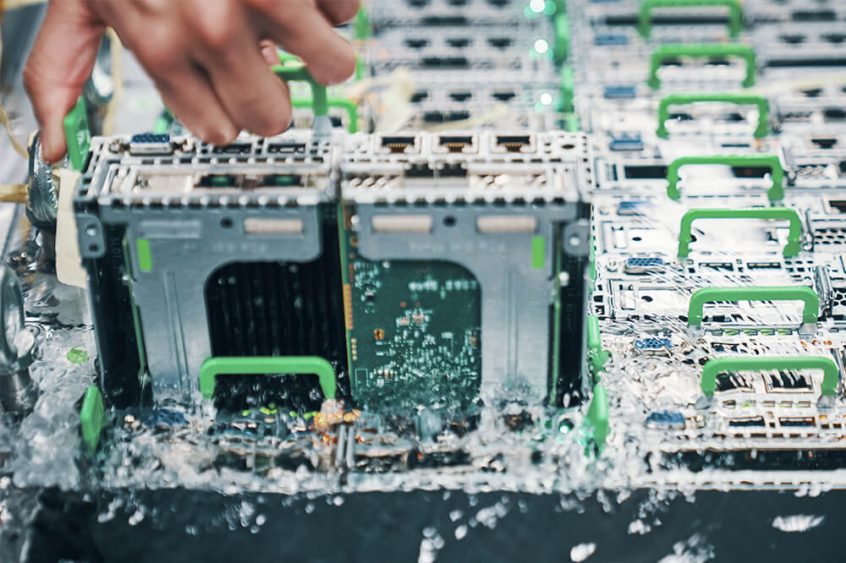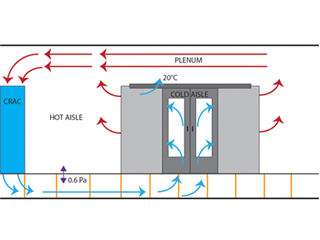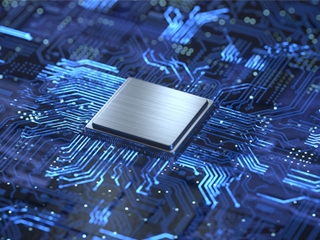Technology has altered the way people live. This has become more evident when the unprecedented Covid-19 pandemic hit the world. Students are stuck at home learning from the online classrooms. The workforces are under a remote operation relying on virtual meetings. Businesses are disrupted forcing them to shift into cashless payment and online transactions. A Gartner poll reveals that 30% of respondents planned to increase their investments in AI technology. This digital transformation makes Cloud infrastructure even more critical. Thus, data centers are transforming into hyper-scale facilities to store and process a larger amount of data. Hyper-scale data centers bring with them their own problems. Such high-density computing applications are difficult to cool.
Air cooling has indeed been used as an industry standard for a long time. However, this solution is not viable for high-density racks. As rack density increases, air cooling is becoming less significant. This is when liquid cooling piqued the interest of industry experts. Several liquid cooling options are available based on the cooling needs of the IT load.
What is Liquid Cooling?
Liquid cooling is any technology that uses liquid in dissipating the heat from the equipment. IBM introduced it through its first water-cooled product using chilled facility water. A common perception is that combining liquid with electrical equipment can be a catastrophe. However, in this digital transformation era, liquid cooling can be an eminent solution. Air is a poor conductor of heat, water removes heat much more efficiently. Water can cool up to 200kW per rack compared to air that’s only viable for densities below 20kW per rack. Many large enterprises such as Alibaba, Google, and Microsoft are already using liquid cooling for their high-density racks. This investment roots from their need to address their customers’ demand through high-performance computing (HPC) applications.
Different Types of Liquid Cooling Solutions
With the importance of liquid cooling to data centers, it’s worth taking the time to determine and assess its two basic types.
- Conductive Liquid Cooling
Also called direct-to-chip cooling. The liquid absorbs the heat directly from the equipment component. This addresses the heat transfer inefficiency of conventional air cooling.
Two Types of Conductive Liquid Cooling:
-
- Using Heat Sinks
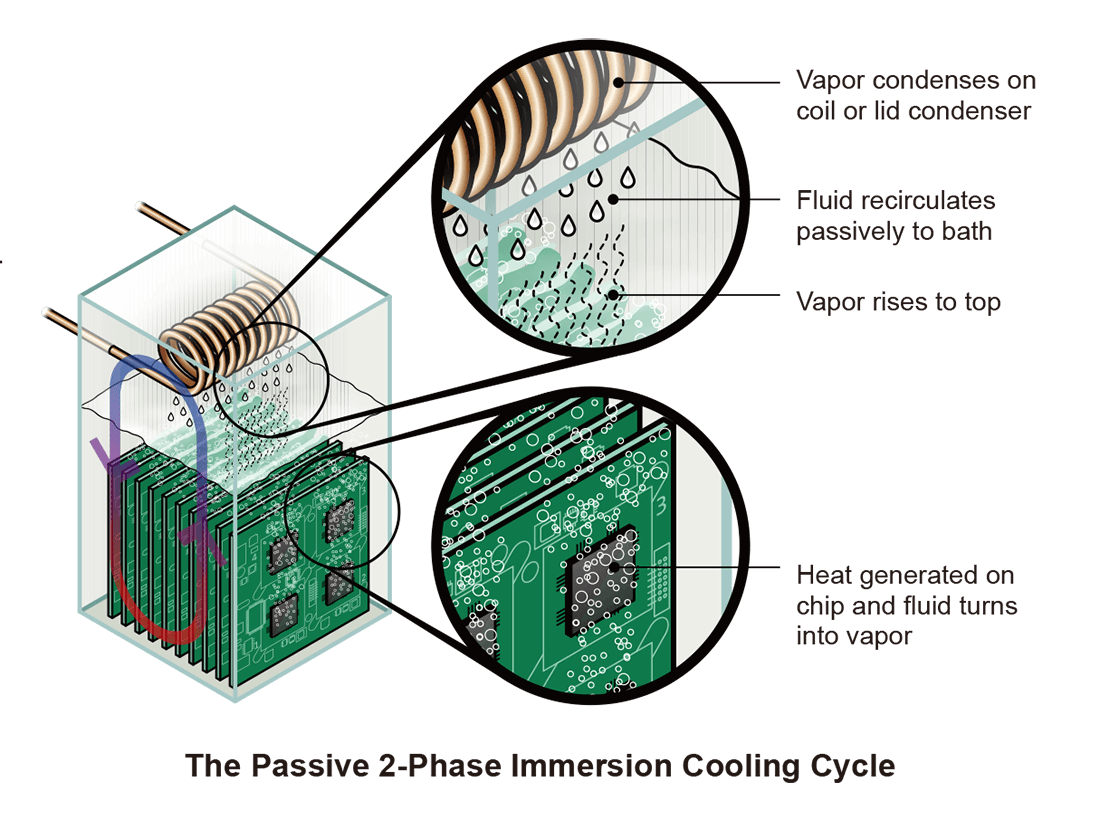
Photo Credit: www.gigabyte.com
A heat sink is a passive device that works by redirecting heat flow away from the hottest component. It is usually mounted on memory modules and processors like CPU or GPU. The heat sink is linked to a pipe where the liquid passes through. Others may also use coolant pumps making the external pumping units unnecessary. A cabinet-mounted heat exchanger serves as a barrier to prevent mixing the facility and computer water supply. This mitigates the risk of liquid distribution system contamination.
- Using Solid Conduction Plate and Heat Pipes
A conduction plate is mounted on the side of the server along with a refrigerant-filled copper heat pipe. On this approach, heat is captured at the interface between the copper tubing and the components. Then, heat rejection takes place between the copper tubing and the plate. When the plate connects to the corresponding plate inside the cabinet, heat from the equipment will be transferred to the liquid loop connected to the coolant distribution unit. - Immersion Liquid Cooling
This type cools the equipment submerging it to a liquid. It can be via IT Chassis or Tub. A non-conductive engineered fluid (Dielectric fluid) allows the equipment to be in direct contact with liquid without short-circuiting. servers are stacked then cooled together on a liquid. The servers are physically altered by removing the fans.
- Using Heat Sinks
Reasons to Adopt Liquid Cooling for Digital Transformation
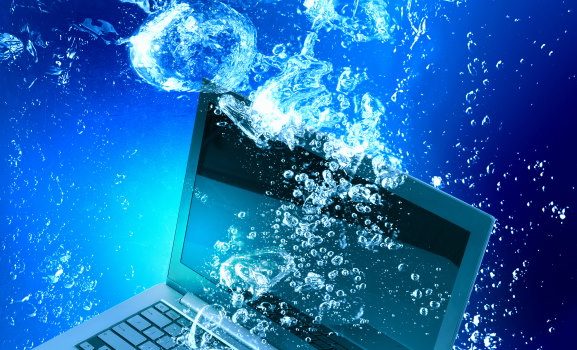
Photo Credit: www.4d-dc.com
Data centers that are coping with the digital transformation can upgrade to newer generations of processors. Thanks to the benefits of liquid cooling, operators can now stand the pace.
1. Higher Level of Cooling Capacity
Due to its thermal conductivity, water has more capacity to diffuse heat. This results in a maintained optimum environment all the time and reliable operation. It also allows targeted cooling which can’t be achieved in air cooling.
2. Energy Efficiency
It minimizes or removes the large air conditioning units. The pumps on this system use less energy compared to the fans required for the air-cooling. This can be a huge saving to the annual operating expense. It can also be beneficial from a sustainability perspective. Today data centers are mandated by the government to redesign into a greener infrastructure. With liquid cooling, data centers can achieve a PUE as low as 1.1.
3. Physical Space
Water blocks feature LED screens or RDGM elements that can be connected to the radiator fans or other equipment. This improves the machine and space from an aesthetic perspective. It also maximizes the space for the growing density without the need for massive reconstruction.
4. Minimized Operation Noise
For hyper-scale facilities with many fans, the noise can be disturbing. A water cooling kit will reduce the need to use fans. Therefore, it will be a better space for operators working inside the server room.
Things to Consider When Deploying Liquid Cooling

Photo Credit: www.auction.com
Integrating liquid cooling into a new or existing air-cooled facility requires careful consideration. The data center needs to be prepared to accommodate liquid into the data center operation. Administrators may consult experts to avoid complications and maximize return on investment (ROI).
1. Existing Data Center Design
Understanding the current data center design is essential to know what is needed in the future. Operators need to identify the density of IT load and their cooling requirements. With this, operators can weigh options and decide which is the most suitable solution. Another aspect to consider under the existing data center design is the plumbing. Pipes must be deployed properly within the infrastructure to avoid operational disruption. This will also mitigate the risk of leaks and airflow obstruction.
2. Heat Load
The heat-to-liquid ratio also affects the cooling system of a hybrid data center. The higher the heat-to-liquid the lower the demand for the air cooler. Operators need to consider the heat load, liquid flow rates, and pressure before redesigning a liquid-cooled data center.
3. Fluid
There are several non-conductive fluids for liquid cooling developed by manufacturers. Each is made for specific applications. These fluids are purified with virtually zero particulates. Chloride, alkaline carbonate salts, or suspended solids are elements that can cause corrosion. Also, the resultant slime from algae and bacteria can hinder heat transfer between the fluid and wetted surfaces.
4. Operating Temperature
The operating environment is always one of the most important considerations. This can affect the fluid’s phase transitions (boiling and freezing), chemical breakdown of the fluid’s chemistry, and heat transfer properties. Freezing reduces the heat transfer capacity of fluid, while boiling may cause overpressure.
5. Cost
For a tight budget, conductive cooling is a more economic solution. It increases the cost of bringing and distributing water to the server. However, savings come in when it eliminates the ever energy-intensive conventional chillers and crashes. Immersive cooling can incur an additional cost with its fluids, especially the engineered fluids. Therefore, operators need to understand the cost of each type of liquid cooling solution and match it with their allocated budget.
Monitoring the Digital Transformation
Liquid cooling is indeed worth consideration to drive efficiency on this never-stopping digital transformation. However, implementing liquid cooling into a data center does not end on setting up the system. The more important one comes at the next stage of the process. After designing, consistent monitoring should be performed by the operators. Data can be pulled up using the sensors that are installed within the system and the facility. With this, operators can proactively identify undesirable situations. With a reliable monitoring solution such as AKCP, a liquid-cooled data center can never go wrong. AKCP offers a wide range of wired and wireless sensors for monitoring various industries including data centers.
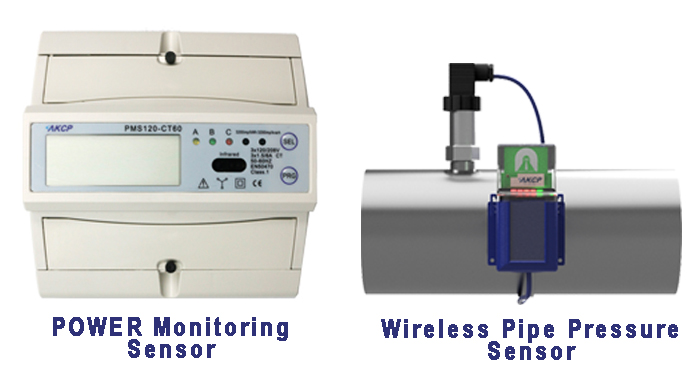
AKCP POWER SENSOR AND WIRELESS PIPE PRESSURE SENSOR
Power Monitoring Sensor
A power meter that can monitor and record real-time power usage must be used to monitor the cooling unit’s power. The AKCP Power Monitor Sensor provides critical data and allows you to remotely monitor power, obviating the need for manual power audits and delivering instant notifications to possible problems. SensorProbe+ and AKCPro Server live PUE calculations may also be utilized with power meter readings to assess the efficiency of power use in your data center. The built-in graphing tool may be used to display data gathered over time using the Power Monitor sensor.
Wireless Pipe Pressure Monitoring
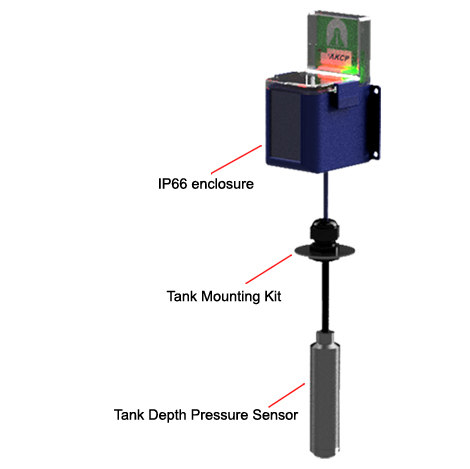
Wireless Tank Level Sensor
The pressure in the tank was monitored by an automatic pressure relief valve with a pressure sensor. Digital pressure gauge for monitoring all kinds of liquids and gasses. Remote monitoring via the internet, alerts, and alarms when pressures are out of pre-defined parameters. Upgrade existing analog gauges.
Tank Level Sensor
Monitor fuel level, or other liquid levels in storage tanks. Ensure you never run low and are ready for the most critical moments
Tank Depth Sensor is compatible with all sensorProbe+ and securityProbe base units. Suitable for any tank up to 20 meters fluid depth. Programmable tank profile provides accurate measurement.
Reference Links:
https://info.siteselectiongroup.com/blog/the-importance-of-liquid-cooling-in-the-data-center-environment
https://www.facilitiesnet.com/datacenters/article/Two-Types-of-Liquid-Cooling-Conductive-and-Immersive–18081
https://download.schneider-electric.com/files?p_Doc_Ref=SPD_VAVR-AQKM3N_EN
https://www.lairdthermal.com/thermal-technical-library/application-notes/common-coolant-types-and-their-uses-liquid-cooling-systems?fbclid=IwAR1cBiNsrvG4cO07xgM2MnqoVOqi2hw4G7ji0m6qsp48ltQuW5-eAWeXcsc
https://www.facilitiesnet.com/datacenters/article/Two-Types-of-Liquid-Cooling-Conductive-and-Immersive–18081
https://www.cdw.com/content/cdw/en/articles/hardware/liquid-vs-air-cooling-pc.html

